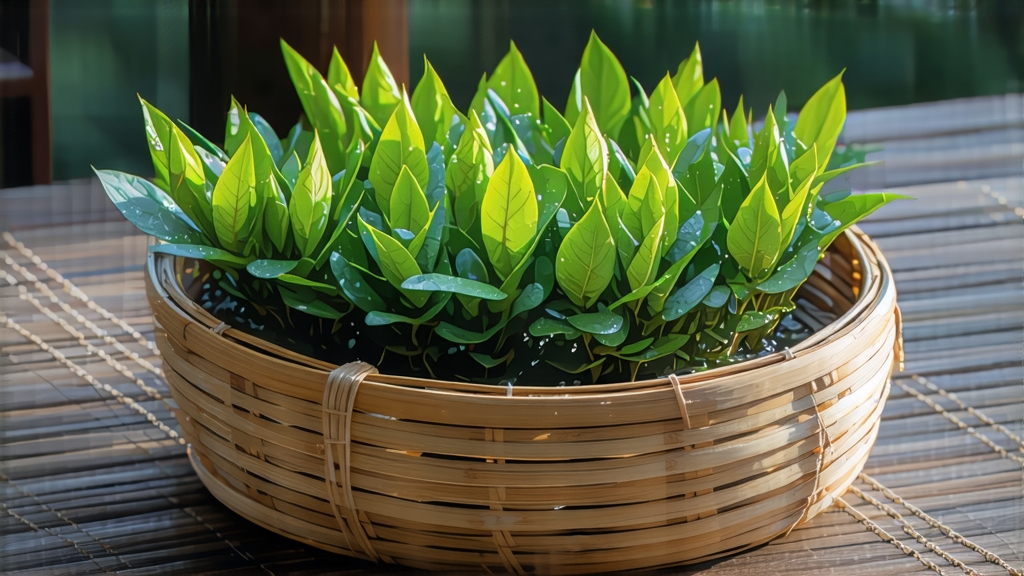
Meng Ding Huang Ya, literally “Yellow Bud from the Summit of Meng,” is the least-known yet most aristocratic member of China’s yellow-tea family. While green tea commands the world’s attention and pu-erh fills collectors’ cellars, this luminous yellow bud has quietly preserved the taste of Tang-dynasty emperors on its mist-wrapped perch 1,450 m above the Sichuan basin. To understand it is to witness a 1,200-year dialogue between altitude and patience, between leaf and microbe, between courtly ambition and monastic restraint.
History: from palace secret to mountain whisper
The first written record appears in 808 CE, when the Tang emperor Xianzong accepted “Meng Mountain Sweet Dew” as tribute. Caravans of porters carried the tea down narrow plank roads, wrapped in bamboo-leaf cylinders sealed with camphor wax so the imperial censors would open only the fragrance of spring. Song dynasty tea-official Zhao Ru-shi noted that “the liquor glows like goose-fat jade,” a phrase later stamped onto every government-issued brick of compressed Meng Ding. When Ming tea masters invented the slow “sealed yellowing” step around 1550, the bud naturally evolved from green to straw-gold, and the court christened it Huang Ya, “Yellow Bud.” By 1908 the last Qing emperor still received 360 grams annually; then warlords, republican turmoil, and the rise of green-tea exports pushed the craft to the edge of extinction. A single family—the Gan clan of Ya’an—kept seed-stock alive in a hidden grove until 1981, when provincial agronomists restarted production with 300 ancient bushes. Today fewer than 2,000 kg leave the mountain each spring, most allocated to state banquets and a handful of overseas connoisseurs.
Terroir: where clouds polish the leaf
Meng Ding summit is actually a knife-edge ridge of 14 peaks shrouded in 280 foggy days a year. The soil is a crumbly quartz-rich yellow loam, pH 4.7, laced with manganese and selenium leached from Jurassic sandstone. Day-night temperature swings can exceed 15 °C, coaxing the plant to store amino acids—especially theanine—at levels double those of neighboring green teas. The fog acts as a natural shade cloth, increasing chlorophyll degradation and setting up the precursor compounds that later create the tea’s signature “chestnut-sweet” aroma during yellowing. Only the local small-leaf landrace, Camellia sinensis var. sinensis ‘Meng Ding #9’, survives the winter frost; its buds are tippy, downy, and so tender that pickers wear cotton gloves to avoid fingernail bruises.
Harvest calendar: the 9-day window
Plucking begins when 75 % of the mountain’s forsythia bushes open their first flower—usually between 20 and 28 March. Workers climb 1,200 stone steps before dawn to finish picking by 9 a.m., when the sun burns off dew and raises leaf temperature above 18 °C, the threshold for enzymatic browning. The standard is absurdly strict: one unopened bud with its first sub-leaf still folded like a paper fan, 1.5–2 cm long, 0.3 g wet weight. Experienced pluckers fill a 500 g bamboo basket in 90 minutes; it will take 6 kg of such buds—roughly 20,000—to yield 1 kg of finished tea.
Craft: the 70-hour meditation
Yellow tea’s soul lies in “sealed yellowing,” a slow oxidation that occurs without rolling. Meng Ding Huang Ya undergoes three iterations of this step, each thinner and longer than the last.
- Sha-qing (kill-green): 4 minutes in a 160 °C wok, hand-tossed 48 times to halt polyphenol oxidase while preserving 12 % residual moisture.
- Chu-huang (first yellowing): the warm leaves are piled 3 cm deep inside a linen sack and slid into a 32 °C bamboo chamber steamed by mountain spring water. Over 24 hours the leaf temperature drops one degree per hour; chlorophyll degrades into pheophytin, edges turn primrose.
- Liang-tiao (cooling): 2 hours on rattan trays in a shaded corridor where Himalayan magpies provide a gentle draft.
- Fu